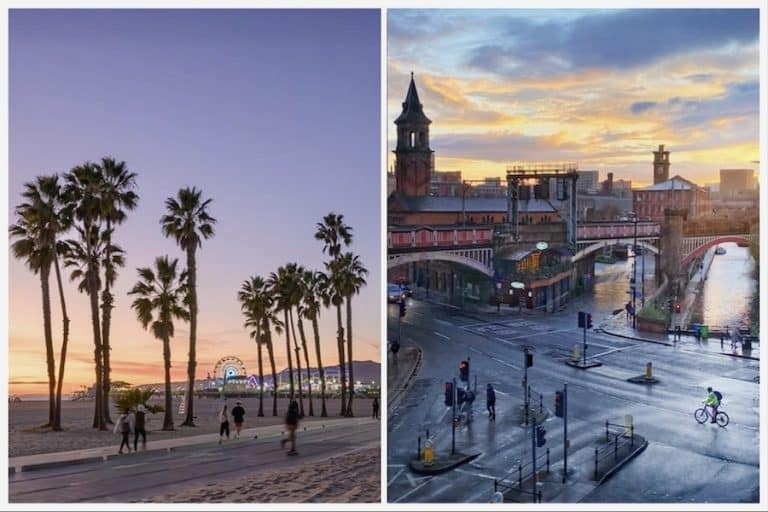Celebrating Manchester’s Victoria Cross winning heroes from WW1
- Written by Thom Bamford
- Last updated 5 months ago
- City of Manchester, Featured, History

Throughout military history, few awards hold as much reverence as the Victoria Cross (VC), a symbol of unparalleled bravery and self-sacrifice. Established in 1856, this prestigious honour is awarded only to those who display extraordinary valour in the face of the enemy, often risking or giving their lives for their comrades and country.
The Manchester Regiment, formed in 1881, embodied this spirit of courage and resilience. Forged through the amalgamation of storied British Army units, the regiment served with distinction in both World Wars, becoming synonymous with gallantry and duty. In 1958, after decades of exemplary service, it was merged into the King’s Regiment (Manchester and Liverpool), which later became part of the Duke of Lancaster’s Regiment.
In World War I, as the world plunged into unprecedented conflict, many soldiers from the Manchester Regiment and Greater Manchester displayed acts of heroism that would earn them the VC. From the gruelling trenches of the Western Front to the unforgiving landscapes of Gallipoli and Mesopotamia, these individuals showed an indomitable spirit and a commitment to duty that resonates through history.
This tribute delves into the lives and legacies of Greater Manchester’s Victoria Cross recipients, honouring not just their remarkable feats, but also their enduring humanity in the darkest hours of war. Their stories remind us of the extraordinary sacrifices made and the profound impact one individual’s courage can have on countless lives.
We will celebrate these heroes on Remembrance Day this year.
Victoria Cross Winners in WW1 from Greater Manchester and The Manchester Regiment
Edward Kinder Bradbury (1881–1914)
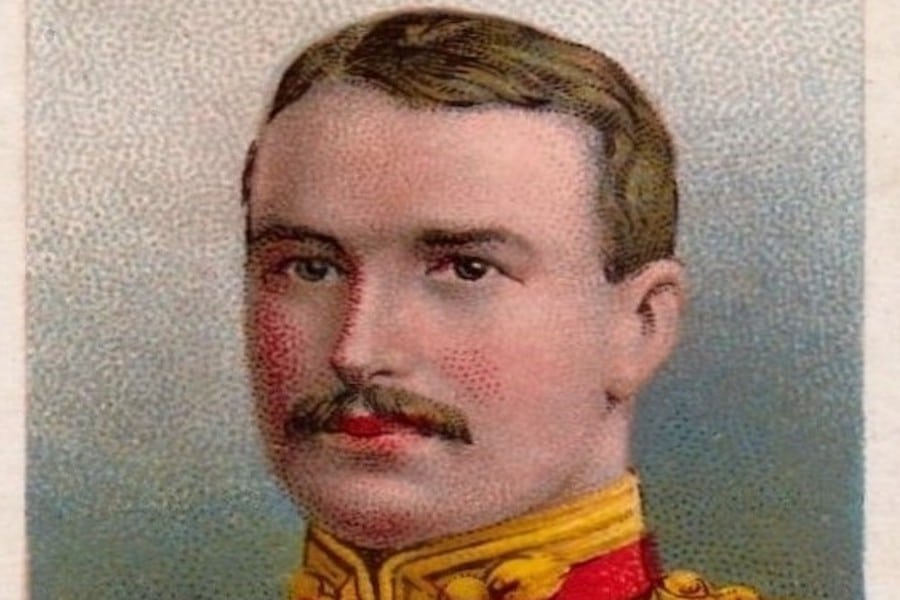
Hometown: Altrincham, Cheshire
Regiment: Royal Horse Artillery
Awarded For: Actions at Néry, France, 1 September 1914
Captain Edward Bradbury was part of the British 1st Cavalry Brigade during the retreat from Mons when they came under a fierce German attack at Néry. With heavy casualties and only one operational gun, Bradbury and two others, Sergeant Major George Thomas Dorrell and Sergeant David Nelson, managed to hold off the German assault. Despite losing a leg to shellfire, Bradbury continued directing fire until he was mortally wounded by a second shell. His heroic efforts allowed reinforcements to arrive and repel the German forces. In 2014, his hometown of Bowden honored his memory with a blue plaque at his childhood home, and his VC is displayed at the Imperial War Museum in London.
John Hogan (1884–1943)
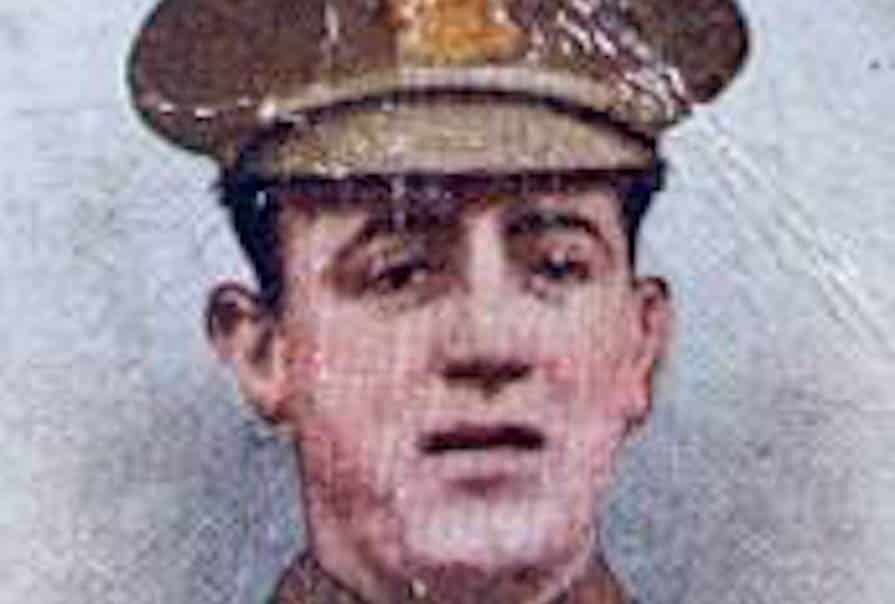
Hometown: Near Oldham, Greater Manchester
Regiment: Manchester Regiment
Awarded For: Actions at Festubert, France, 29 October 1914
A former postman, Sergeant John Hogan had served in South Africa and India before WWI. On October 29, 1914, near Festubert, his trench was overtaken by German forces. After two failed attempts to reclaim it, Hogan and Second Lieutenant James Leach volunteered to lead an assault with a small team, successfully retaking the trench after fierce close-quarters fighting. He was later awarded the VC by King George V at Buckingham Palace. Hogan experienced hard times post-war, even selling matches in the street, but his VC is now displayed in the Oldham Civic Centre.
Lieutenant Alfred Wilkinson (1896–1940)
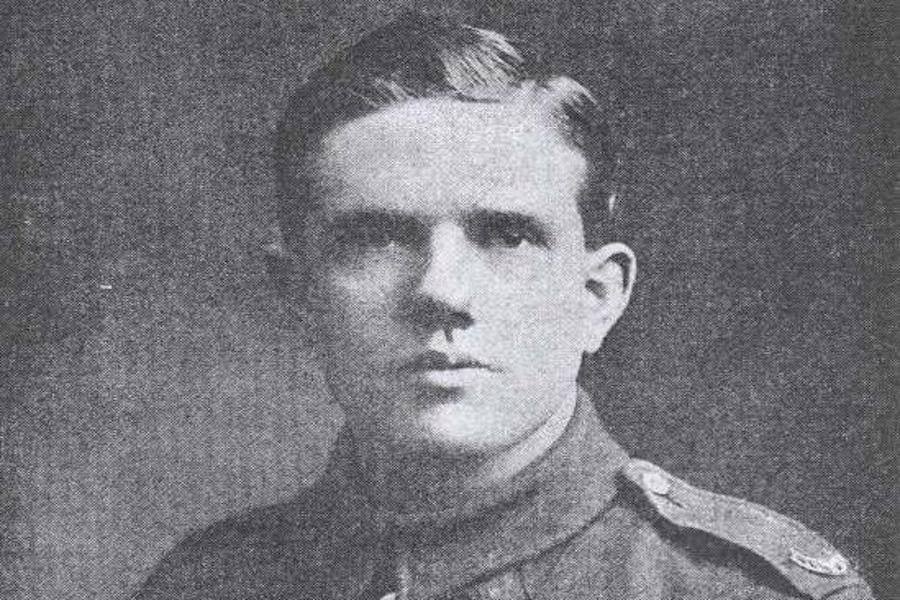
Hometown: Leigh, Greater Manchester
Regiment: 1/5th Battalion, Manchester Regiment
Awarded For: Actions at Marou, France, 20 October 1918
Alfred Wilkinson joined the Royal Scots Greys in 1914 and later transferred to the Manchester Regiment. During an assault at Marou, he volunteered to deliver a vital message across 600 yards of open ground under heavy enemy fire after seeing four comrades die attempting the same. His courage ensured the communication reached his company, a feat for which he was awarded the VC. Wilkinson survived the war but tragically died from gas poisoning in 1940.
Lieutenant-Colonel John Elisha Grimshaw (1893–1980)

Hometown: Abram, Greater Manchester
Regiment: Lancashire Fusiliers
Awarded For: Actions at W Beach, Gallipoli, 25 April 1915
John Grimshaw was among the “Six VCs Before Breakfast” for his bravery at Gallipoli. Under intense fire, he helped cut through barbed wire on the beach, pushing through with his fellow soldiers to secure the cliffs despite heavy losses. He described the harrowing scene as they struggled against overwhelming Turkish fire, managing to secure a foothold on the beach. Grimshaw retired as a Lieutenant-Colonel in 1953 after a distinguished military career.
Private William Kenealy (1886–1915)
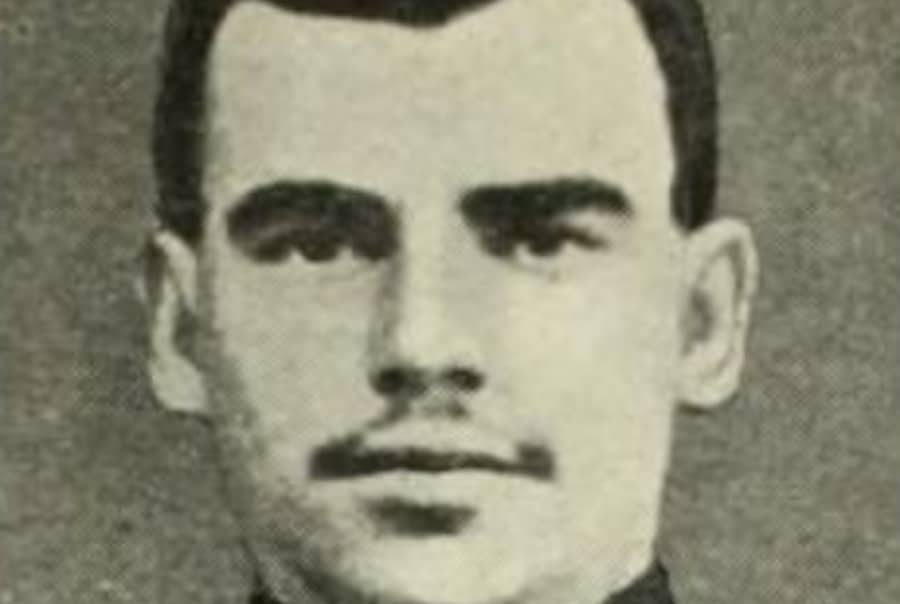
Hometown: Ashton-in-Makerfield, Greater Manchester
Regiment: Lancashire Fusiliers
Awarded For: Actions at W Beach, Gallipoli, 25 April 1915
William Kenealy was another of the “Six VCs Before Breakfast” for his courageous service at Gallipoli, where he braved heavy fire to deliver messages and help cut through barbed wire. Though he survived the assault, Kenealy was killed in action at the Battle for Gully Ravine two months later. His brother Francis had died eight months prior at Ypres. Kenealy’s sacrifice is remembered as part of the legacy of Gallipoli.
Private Thomas Woodcock (1888–1918)
Hometown: Wigan, Greater Manchester
Regiment: Irish Guards
Awarded For: Actions at Broenbeek, Belgium, 12–13 September 1917
In Belgium, Private Thomas Woodcock held his position against enemy fire for 96 hours, then heroically rescued a fellow soldier under heavy machine-gun fire. He carried the wounded man across open ground, fully exposed to enemy fire. Woodcock received a hero’s welcome when he returned to Wigan in 1918 but returned to battle soon after. He was killed in action on 27 March 1918 and is buried at the British Military Cemetery in Douchy-Les-Ayette.
Second Lieutenant Charles Harry Coverdale (1888–1955)

Hometown: Bury, Greater Manchester
Regiment: Manchester Regiment
Awarded For: Actions south-west of Poelcapelle, Belgium, 4 October 1917
At Poelcapelle, Sergeant Coverdale showed exceptional bravery by taking out three enemy snipers and capturing two machine-gun positions. He later attempted to lead his platoon to capture another position but was held back by friendly fire. Coverdale later became a Second Lieutenant and was also awarded the Military Medal for his service. His VC recognised his outstanding bravery in repeatedly risking his life to ensure the success of his battalion’s objectives.
James Kirk (1897–1918)
Hometown: Cheadle Hulme, Cheshire
Regiment: Manchester Regiment
Awarded For: Actions at Oise Canal, France, 4 November 1918
Second Lieutenant James Kirk, while covering the crossing of the Oise Canal, positioned himself on a raft under heavy fire. Despite intense machine-gun fire and personal risk, he provided cover, holding his position until killed. His courage allowed two platoons to cross the canal, and he was posthumously awarded the VC. Kirk’s sacrifice and bravery are remembered as a powerful example of devotion to duty.
Walter Mills (1894–1917)

Hometown: Oldham, Lancashire
Regiment: Manchester Regiment
Awarded For: Defense at Red Dragon Crater, Givenchy, France, 11 December 1917
Private Walter Mills defended his post from an enemy patrol following a gas attack, despite suffering from gas poisoning himself. He held off the enemy single-handedly with grenades until reinforcements arrived, ensuring the line held. Tragically, Mills succumbed to gas poisoning soon after. His VC was buried with his daughter, and a plaque commemorating him was installed at Oldham Parish Church.
George Stringer (1889–1957)
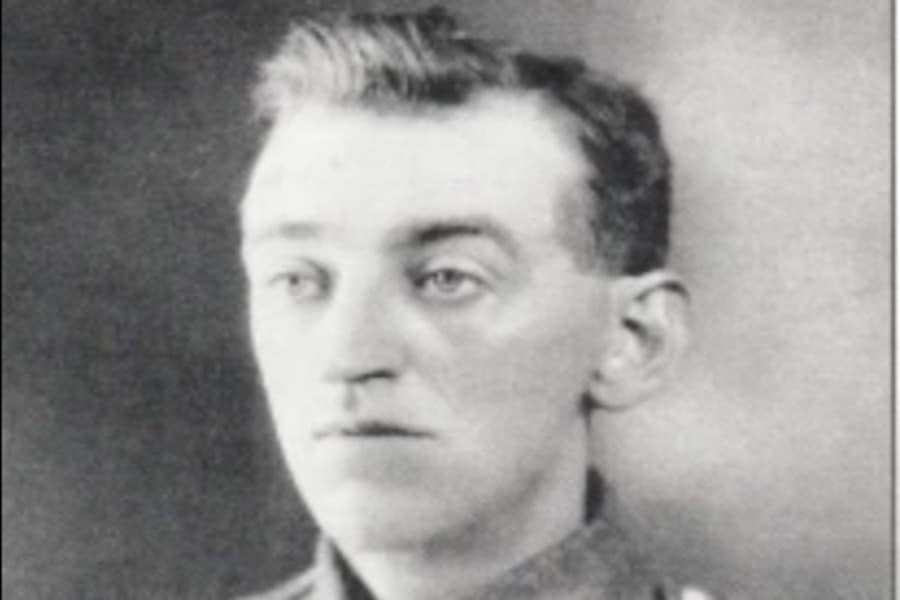
Hometown: Miles Platting, Manchester
Regiment: Manchester Regiment
Awarded For: Actions during the Battle of Es Sinn, Mesopotamia, 8 March 1916
Private George Stringer held his post on the battalion’s extreme flank after an enemy counter-attack, protecting his comrades’ withdrawal until he ran out of grenades. This heroic defence saved his unit from being overrun. Stringer was awarded the VC and the Serbian Gold Medal for Bravery, and his medals are preserved at the Museum of the Manchester Regiment.
Issy Smith (1890–1940)
Hometown: Manchester (British-Australian)
Regiment: Manchester Regiment
Awarded For: Actions near Ypres, Belgium, 26 April 1915
Corporal Issy Smith ventured forward under heavy fire to rescue a wounded comrade and continued to assist others throughout the day. His bravery earned him the VC, as well as the French Croix de Guerre and the Russian Cross of St. George. Smith later moved to Australia, where he remained an active community member and served as a Justice of the Peace.
Winners of the Victoria Cross from the Manchester Regiment
Wilfrith Elstob (1888–1918)
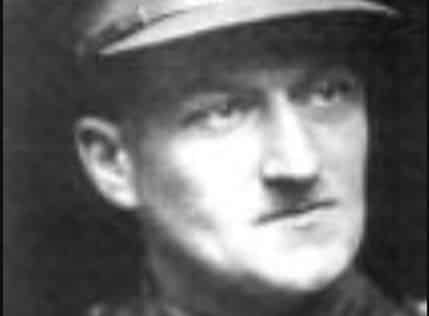
Hometown: Chichester, West Sussex
Regiment: Manchester Regiment
Awarded For: Defense of Manchester Redoubt, near Saint-Quentin, France, 21 March 1918
Lieutenant Colonel Wilfrith Elstob commanded the 16th Battalion, Manchester Regiment during the German spring offensive in 1918. Under intense artillery bombardment and waves of enemy attacks, Elstob encouraged his men, moving among the posts to personally bolster their defence. Despite being wounded twice, he led by example, using a revolver, rifle, and grenades to repel the attackers. When surrounded, Elstob communicated to his brigade, “The Manchester Regiment will defend Manchester Hill to the last.” He was killed in the final assault, standing by his commitment to “fight and die” there. Elstob’s VC is a testament to his exceptional courage and sacrifice.
William Thomas Forshaw (1890–1943)
Hometown: Barrow-in-Furness, Cumbria
Regiment: Manchester Regiment
Awarded For: Defense of Krithia Vineyard, Gallipoli, Turkey, 7–9 August 1915
Lieutenant Forshaw held a critical trench corner during the Battle of Krithia Vineyard, leading a defense against continuous Turkish attacks. Over 40 hours, he threw bombs while smoking a lighted cigarette to ignite the fuses, personally engaging the enemy and retaking portions of the trench when captured. His determined leadership and refusal to abandon the position earned him the VC. Forshaw’s medals, including his VC, are displayed at the Museum of the Manchester Regiment.
James Edgar Leach (1892–1958)
Hometown: Wavertree, Liverpool
Regiment: Manchester Regiment
Awarded For: Recapture of a trench near Festubert, France, 29 October 1914
Second Lieutenant Leach, alongside Sergeant John Hogan, took decisive action to retake a trench occupied by the Germans. Methodically moving through the trench, they succeeded in regaining control, securing enemy prisoners, and saving the position for their battalion. Leach’s courage was recognised with the VC. His medal is exhibited in the Lord Ashcroft Gallery at the Imperial War Museum, London.
- This article was last updated 5 months ago.
- It was first published on 6 November 2024 and is subject to be updated from time to time. Please refresh or return to see the latest version.
Did we miss something? Let us know: press@ilovemanchester.com
Want to be the first to receive all the latest news stories, what’s on and events from the heart of Manchester? Sign up here.
Manchester is a successful city, but many people suffer. I Love Manchester helps raise awareness and funds to help improve the lives and prospects of people across Greater Manchester – and we can’t do it without your help. So please support us with what you can so we can continue to spread the love. Thank you in advance!
An email you’ll love. Subscribe to our newsletter to get the latest news stories delivered direct to your inbox.
Got a story worth sharing?
What’s the story? We are all ears when it comes to positive news and inspiring stories. You can send story ideas to press@ilovemanchester.com
While we can’t guarantee to publish everything, we will always consider any enquiry or idea that promotes:
- Independent new openings
- Human interest
- Not-for-profit organisations
- Community Interest Companies (CiCs) and projects
- Charities and charitable initiatives
- Affordability and offers saving people over 20%
For anything else, don’t hesitate to get in touch with us about advertorials (from £350+VAT) and advertising opportunities: advertise@ilovemanchester.com

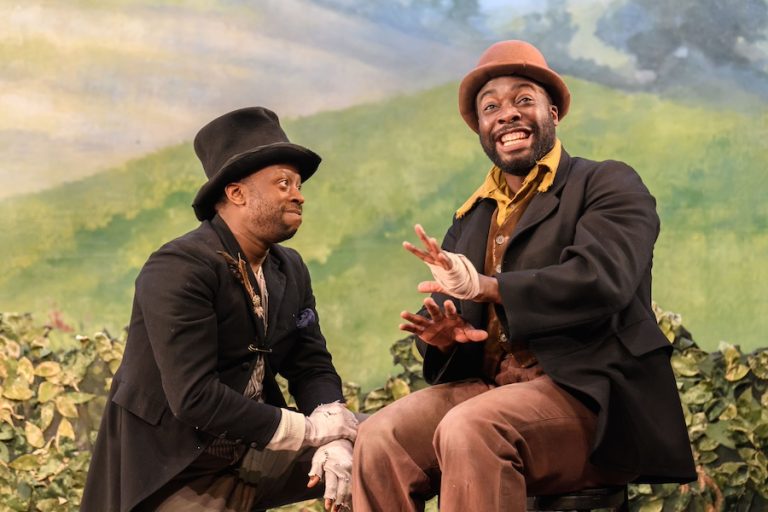
Review: Tambo & Bones at HOME is ‘ambitious, bold, gutsy…. and terrific’

Review: JB Shorts 26 at 53two is ‘a five-star showcase of northern talent’


